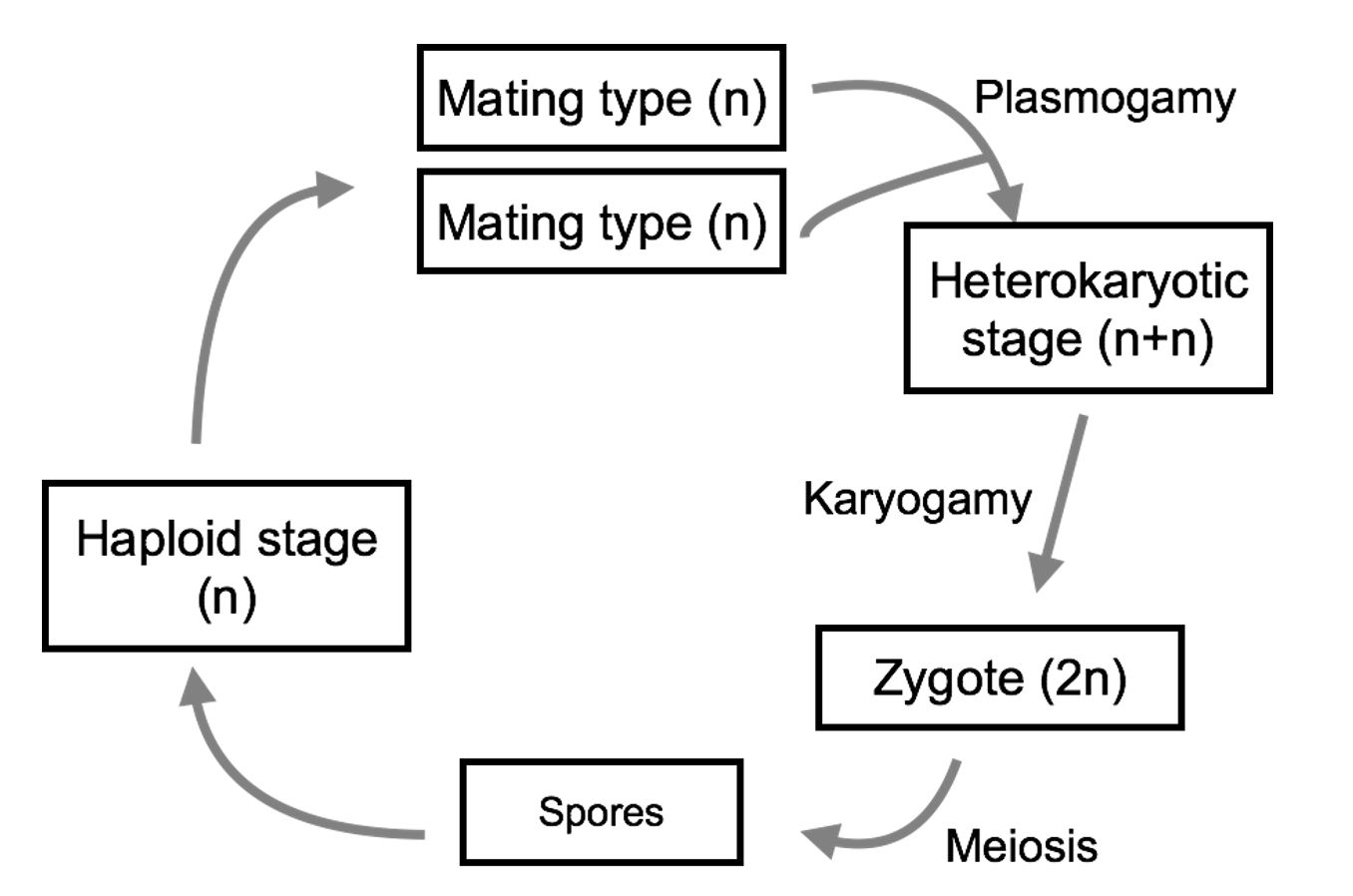Introduction to Fungi
Fungi are a diverse group of eukaryotes. About 150,000 species have been described. However, this is almost certainly a gross underestimate of fungal species, which are estimated to number 1-5 million. Fungi were historically classified with the plants due to superficial similarity in growth forms. However, they are much more closely related to animals. Today we classify them with animals in Supergroup Opisthokonta.
Like all opisthokonts, fungi lack plastids and are heterotrophs. Unlike the other major group of opisthokonts (animals) they obtain their nutrition by extraorganismal digestion. Fungal cells secrete hydrolytic enzymes, called exoenzymes, which digest food items in the environment. The smaller molecules that result from digestion are then absorbed by the fungus. Many fungal species are saprobes, organisms that feed on decaying organic matter. Others exist in symbioses with other organisms.
Fungi are characterized by a cell wall that contains complex polysaccharides, including chitin and glucans. Their plasma membranes contain ergosterol, which functions to stabilize the membrane, much like cholesterol in animal cell membranes. They use glycogen as an energy storage molecule.
Fungi can be either unicellular or multicellular, or they may switch between these two states. They exist in a variety of growth forms. Unicellular fungi are called yeasts. Multicellular fungi are filamentous. The filaments are called hyphae (sing. hypha), and a mass of filaments is called a mycelium. Hyphae are most commonly septate, meaning that internal cell walls (septa) divide the filament into compartments. These cell walls are perforated with pores, allowing materials to pass between compartments. Less common are coenocytic fungi, which lack septa.
Fungi reproduce asexually and sexually. For many species, no sexual form is known. Others switch between sexual and asexual reproduction. Both sexual and asexual reproduction rely on spores that disperse from the parent organism. Sexual reproduction is variable; a generalized fungal life cycle is shown. Fungi fuse the cytoplasm and nuclei in separate steps. Plasmogamy is the fusion of cells. We refer to the product of plasmogamy as a heterokaryon because it contains genetically distinct nuclei. The nuclei may not fuse for days, months, or years. Fusion of nuclei is called karyogamy, and results in a diploid zygote. The zygote undergoes meiosis to form spores, which give rise to a new haploid individual.


